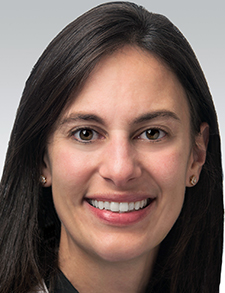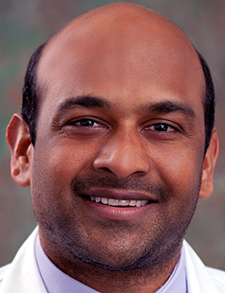The switch from in-person to virtual takes away a personal touch, but also offers some convenience hospitals may continue to use
The COVID-19 pandemic forced everyone to work a little differently, including hospitalists involved with onboarding.
From virtual sessions to new ways to connect in person, the two-plus years of pandemic-style onboarding have left behind some permanent changes, as well as some plans to return to onboarding as it was done before.
Here’s how the pandemic shifted onboarding at three hospitals across the U.S. and what they learned along the way.
Baystate Health, Springfield, Mass.

Dr. Medarametla
Before the pandemic, new hospitalists at Baystate Health usually all started on the same day in June or July and attended a two-day, in-person orientation, said Venkatrao Medarametla, MD, associate professor of medicine at the University of Massachusetts Chan Medical School, Baystate, and hospitalist at Baystate Health. The in-person orientation allowed them to learn about the hospital’s culture and meet other new employees, some of whom were non-hospitalists.
In addition to department-specific training and electronic health record training that took place after the first two days, new hospitalists received a senior hospitalist “buddy” who would serve as a resource. During their first four weeks, new hospitalists gradually received more patients until they reached their full patient load. After that, there were one- and three-month check-ins with new hospitalists.
Now, start dates are more random because of internal personnel changes, COVID-19 statuses, and short staffing, Dr. Medarametla said. Because of short staffing, the gradual introduction of new hires to their full patient load currently takes two instead of four weeks. The more formal presentations associated with onboarding are virtual and sometimes pre-recorded. Baystate still uses the buddy system, which he said is a crucial part of onboarding.
The virtual format and the decrease in in-person group activities due to COVID-19 have changed the tone of onboarding, Dr. Medarametla said. He would like to see more face-to-face interactions, and while he anticipates some will return, some training will remain virtual.
One bright spot in the current onboarding plan, he said, is an in-person, two-day session held about three to four months after hiring, when leaders give more in-depth explanations of metrics and other information. This is invaluable because there’s often information overload during the first few weeks of any job. The session, held in a space large enough to allow social distancing, has been so successful that some senior hospitalists said they want to attend. “They can always join if they are free. They can retrain and realign their goals with the organizational goals,” Dr. Medarametla said.
Northwestern Medicine, Chicago

Dr. Defoe
Pre-pandemic, a new hospitalist hired at Northwestern Medicine attended a six-hour onboarding session that included meals, a hospital tour, and other helpful information, said Maya Defoe, MD, recruitment director for the division of hospital medicine at Northwestern Medicine. In the afternoon, daytime hospitalists and nocturnists would branch into their respective groups for shift-specific information. The session also included a light icebreaker with activities like singing a random song together.
Administrators matched new hires with a clinical coach who could help answer questions, be a support system, and even guide new hires with some information about Chicago living.

Dr. Cyrus
Now, onboarding is done virtually in a three-hour session, and there’s no plan (yet) to resume it in person, Dr. Defoe said.
Dr. Defoe isn’t a huge fan of virtual onboarding. “It’s more draining for me because I can’t see reactions,” she said. Although attendees are encouraged to turn on their video, not everyone does, which removes the personal aspect. Virtual onboarding also prevents formal hospital tours and the ability to meet and interact with fellow new hires even though there is a virtual icebreaker. To help connect staff members, a wellness committee schedules informal get-togethers. But of course, participation in these takes more initiative from everyone, including both new hires and more experienced hospitalists.
That said, Dr. Defoe thinks one perk of virtual orientation is that it’s more accessible to those who’ve not yet moved to the Chicago area.
The new format has led to more reliance on the clinical coaches to guide new hires, said Rachel Cyrus, MD, clinical practice director for the hospitalist program at Northwestern Medicine. Dr. Cyrus is also the chair of SHM’s practice management committee.
Carilion Clinic, Roanoke, Va.

Dr. Odeti
The recruiting process at Carilion Clinic, where Shyam Odeti, MD, is the section chief of hospital medicine for its seven hospitals, used to be in-person interviews that enabled candidates to get to know potential fellow staff members and tour the hospital. This was true for both physicians and advanced practitioners, even though their interview processes were slightly different.
For onboarding itself, the presentations for hospitalists given by various staff members, once in person, are now virtual. “Virtual is great, but it’s not the same. It’s not only the learning. It’s also meeting people, which is the most important part,” Dr. Odeti said. He likens the role of a hospitalist to that of a quarterback, who would naturally want to know who his offensive-line team members are, not to mention other players.
“Developing relationships and learning the culture and processes outside the hospitalist section is taking longer and taking extra efforts,” he said.
Both before the pandemic and now, new hospitalists shadow a seasoned hospitalist physician and will see fewer patients for a couple of weeks until they become more familiar with their hospital.
Despite the drawbacks of going virtual, the pandemic has forced Carilion’s seven hospitals to standardize onboarding more, Dr. Odeti said. He sees this as a positive result of the pandemic changes.
Lessons learned
Hospitalists have faced innumerable challenges these last few years, not the least of which is how to onboard new clinicians. But they’ve taken it in stride much like everything else. They’ve adapted, innovated, and created new ways of doing things. Here are just a few of the ideas hospitalists shared about onboarding during a pandemic.
Think of the recruiting process as part of onboarding. Ask potential hospitalists about their goals. If their goals aren’t aligned with your hospital’s goals, then it may not be the right time for them to start with your organization, Dr. Medarametla said. “Recruiting right is crucial,” he said.
Have hospital leaders seek out new hires in person during the first week. Drs. Cyrus and Defoe always find new hospitalists in their units in the first week to say hello. It helps them feel valued and like an important member of the hospital staff. “These in-person touches become even more important,” Dr. Cyrus said.
Remind new hires to have self-compassion, Dr. Cyrus said. No matter what new job you start, there’s always a lot of information to process. Let new hires know they should be patient with themselves, even if they can’t remember where the bathroom is for the first day or two.
Think of onboarding as a marathon, not a sprint, Dr. Odeti said. Because of pandemic-related changes, you may need to take longer to orient new hospitalists, and that’s okay. What’s more important is to make a thoughtful investment of time and effort to help them succeed as hospitalists and enable their long-term retention. Hospitalist leaders should initially do frequent check-ins.
Continually check-in and retrain. Have standard time points at one month, three months, or as you see fit to check in with new hires, Dr. Medarametla advised. Use this time to hear their concerns or questions and retrain as needed. You could do this individually, or you could hold a structured event to present information that may have been too overwhelming to share during the first week or two. “Intervene and re-evaluate until they are completely on board,” he suggested.
Find ways for new hospitalists to meet with non-hospitalists. Hospital medicine is a team sport. Because hospitalists must be in contact with a range of people, virtual sessions where they can put a name to a face with subspecialists, nursing, or other hospital units can be helpful, Dr. Odeti said. Even quarterly sessions like this can be useful.
Whether your institution reverts to all in-person onboarding, switches to all virtual, or implements a hybrid of both, onboarding comes down to communicating, listening, supporting, and connecting.
Vanessa Caceres is a medical writer in Bradenton, Fla.